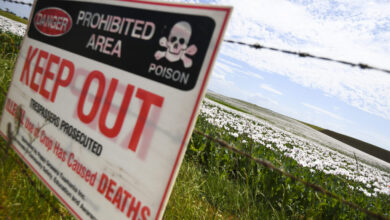By William J. Ford
ANNAPOLIS — A work group composed of Maryland state, county and school officials met Thursday to assess and prioritize public school construction needs.
Bob Gorrell, executive director of the state’s public school construction program, presented several recommendations on how to fund projects using a certain formula and a weight to calculate them based on need.
To receive a high educational facility deficiency score, the math would be to add the facility condition index (physical condition of a school) with educational sufficiency number (usable school space) that would equal a combined deficiency score.
The higher the score, the higher a school project would be placed on a priority list of funding.
“I feel like we are in AP Calculus,” said Sen. Douglass J.J. Peters (D-District 23) of Bowie.
One simplified measure Peters and the nine-member group followed much easier stemmed from Gorrell’s proposed color-coded categories and weight scale based on highest priority and not per student population.
The number one classification would represent the highest priority for a school with immediate concerns such as mold, a sinking roof and electrical hazards.
Schools listed as number nine are schools recently in the less need built with new lighting, decent plumbing and not overcrowded.
“We are only talking about identifying the problem. The solution is a whole other discussion,” Gorrell said. “This is all considered works in progress.”
The proposal comes from how school districts in New Mexico organized school construction projects. Gorrell previously worked to lead that state’s construction efforts.
The population and government structures are slightly different between Maryland and New Mexico.
The 24 school districts in Maryland are organized in 23 counties and in Baltimore City. New Mexico has 89 school districts based in a certain region of the state.
Maryland county governments, such as Prince George’s, fund a significant portion of its budget toward public education.
In New Mexico, Gorrell said local school systems can receive state aid, but must mainly raise its own funds.
In theory, to implement the proposal in Maryland, Baltimore City could receive top priority for school construction because it has the most older school buildings in the state. Kent County ranks second and Prince George’s at third, according to the state’s Interagency Commission on School Construction.
“We should keep in mind how we do it in this state … [by] making sure each county gets its piece,” Del. Marc Korman (D-Montgomery County) said. “Our structure is by county.”
According to legislation for the Workgroup on the Assessment and Funding of School Facilities, a goal will be to provide at least $400 million each year for public school construction.
The legislature already approved millions of dollars for the next two fiscal years from the ongoing Kirwan Commission for mental health services, teacher salaries and other services.
State Superintendent Karen Salmon, who chairs the group, said more feedback will be obtained from local school facility planners and other officials.
“We’re just trying to make sure that we’ve got the right allocations so that if we do make any kind of comparisons, they make sense. I don’t think we’re at that point,” he said. “We have to make a decision because that’s part of our task.”
The group plans to meet at least four more times: Sept. 25, Oct. 7 and 28, Nov. 19. The goal would be to produce a final report by Dec. 1.
This post originally appeared in The Washington Informer.







